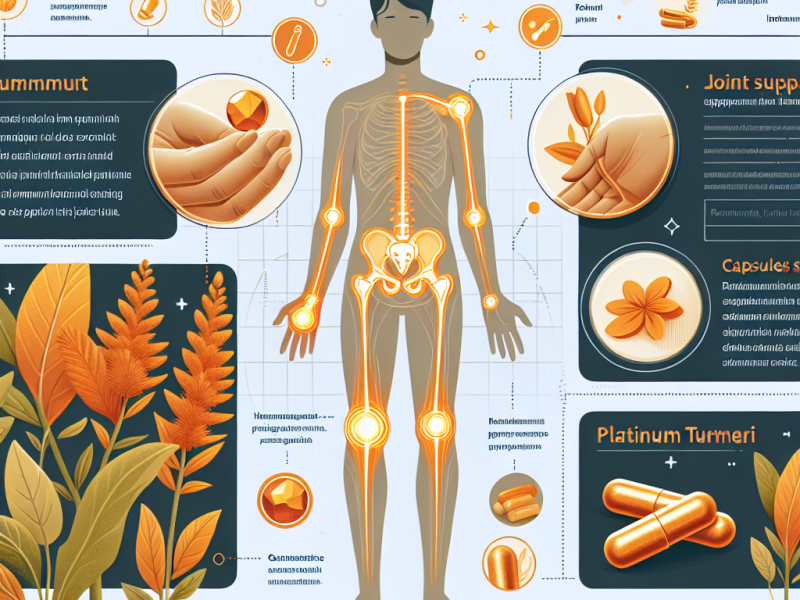Here are a few top semantic keyword phrases we’ll be diving into today:
- The Anti-inflammatory Properties of Turmeric
- The Role of Ginger in Reducing Joint Pain
- How Combining Turmeric and Ginger Benefits Joint Flexibility
- Practical Ways to Include Turmeric and Ginger in Your Diet
The Anti-inflammatory Properties of Turmeric
One of the most talked-about aspects of turmeric is its anti-inflammatory properties. Turmeric, or more precisely its active component curcumin, has been used for centuries in traditional medicine. You can find it in various forms: powder, capsules, and even tea! However, if you’re aiming to battle chronic inflammation, just sprinkling a little turmeric here and there isn’t going to cut it. Consistency is key, people!
Studies have shown that turmeric blocks molecules that play a significant role in inflammation. When my knee started giving me trouble, incorporating turmeric into my daily routine became a game-changer. Now, the science behind it does back me up. Turmeric’s anti-inflammatory claims aren’t just old wives’ tales. Modern science supports its benefits.
I started using turmeric supplements because I’ve always been skeptical about the bioavailability of natural supplements. Turmeric needs a little help to be fully absorbed by our body—enter black pepper! Yep, most supplements combine it with black pepper to enhance absorption. You’ve got to be a little scientist yourself when it comes to natural remedies, my friend!
The Role of Ginger in Reducing Joint Pain
Ginger, much like turmeric, has a lengthy resume in traditional medicine. What sets ginger apart is its pain-relieving properties. Ever had ginger tea when you catch a cold? It’s a lifesaver. Beyond the sniffles, ginger works wonders for reducing joint pain, thanks to its active constituents like gingerol. When I was younger, I’d watch my grandma sip on ginger tea daily, and now I understand why she was so spry!
Ginger doesn’t just mask the pain but goes after the root cause by reducing inflammation. I’ve tried ginger shots, capsules, and even those little candied ginger pieces. They’re not just good treats but mini powerhouses in battling pain. So, if you’re skeptical about pills, there are plenty of delicious ways to get your ginger fix.
As a marketer, I always pay attention to trends, and let me tell you, ginger is not a fad. Its popularity in both food and supplements is backed by solid research. New studies are constantly emerging showing ginger’s benefits. So, whether you’re battling joint pain or just looking for an overall wellness boost, incorporating ginger into your lifestyle is a smart move.
How Combining Turmeric and Ginger Benefits Joint Flexibility
Alright, let’s talk synergy between turmeric and ginger. These two are like the dynamic duo of natural remedies. When combined, the benefits are amplified. Think of it like Batman and Robin! When my flexibility started to dwindle, I found that using both made a noticeable difference. It’s all about that synergy, baby!
Combining them isn’t rocket science, but it does require a bit of consistency. I started with a morning smoothie loaded with both turmeric and ginger. The taste took some getting used to, but the effects were worth it. My joints felt more limber, and I had less stiffness after my morning runs. Who knew that a little smoothie could be such a game-changer?
If smoothies aren’t your thing, no worries! There are plenty of other ways to incorporate these superfoods. You can find them in capsules, teas, or even specialized drinks. The key takeaway here is to be consistent. Whether it’s through a smoothie or a capsule, make sure you’re incorporating both daily for the best results.
Practical Ways to Include Turmeric and Ginger in Your Diet
Finding practical ways to include turmeric and ginger in your diet is honestly easier than you might think. One of my favorite ways is through cooking. A little sprinkle of turmeric in your scrambled eggs or a dash of ginger in your tea can go a long way. I’ve even started adding turmeric to my pancake batter—sounds weird, but it’s delicious!
If you’re not much of a cook, don’t worry. Supplements are an easy alternative. But make sure you’re picking high-quality options. Look for supplements that incorporate black pepper for better absorption of turmeric. For ginger, I love those little chewable ginger candies for a quick and tasty fix.
If you’re the type who’s always on the go, consider pre-made options like turmeric-ginger shots or drinks. They are portable and pack a punch. I usually grab one before my workout, and it helps me keep the aches at bay. There’s no one-size-fits-all solution, so find what works best for you and stick with it.
Check out the newly launched brand, Master Nutritional – Master Turmeric with Ginger Supplement.
FAQ
1. How long does it take to see results from taking turmeric and ginger?
It varies from person to person, but generally, you might start noticing changes within a few weeks of consistent use. Always consult with your healthcare provider for personalized advice.
2. Are there any side effects of consuming turmeric and ginger?
Both are generally safe for most people. However, excessive consumption can lead to stomach upset or other minor issues. Moderation is key, and consulting your healthcare provider is always a good idea.
3. Can I take turmeric and ginger supplements together?
Yes, you can! In fact, combining them can enhance their anti-inflammatory and pain-relieving properties. However, always check with your healthcare provider to ensure it’s safe for you.
4. What’s the best form to consume turmeric and ginger?
There’s no definitive answer as it depends on what suits your lifestyle. Whether it’s fresh, powdered, or in supplement form, the key is consistency. Choose what you’ll stick with in the long term.



